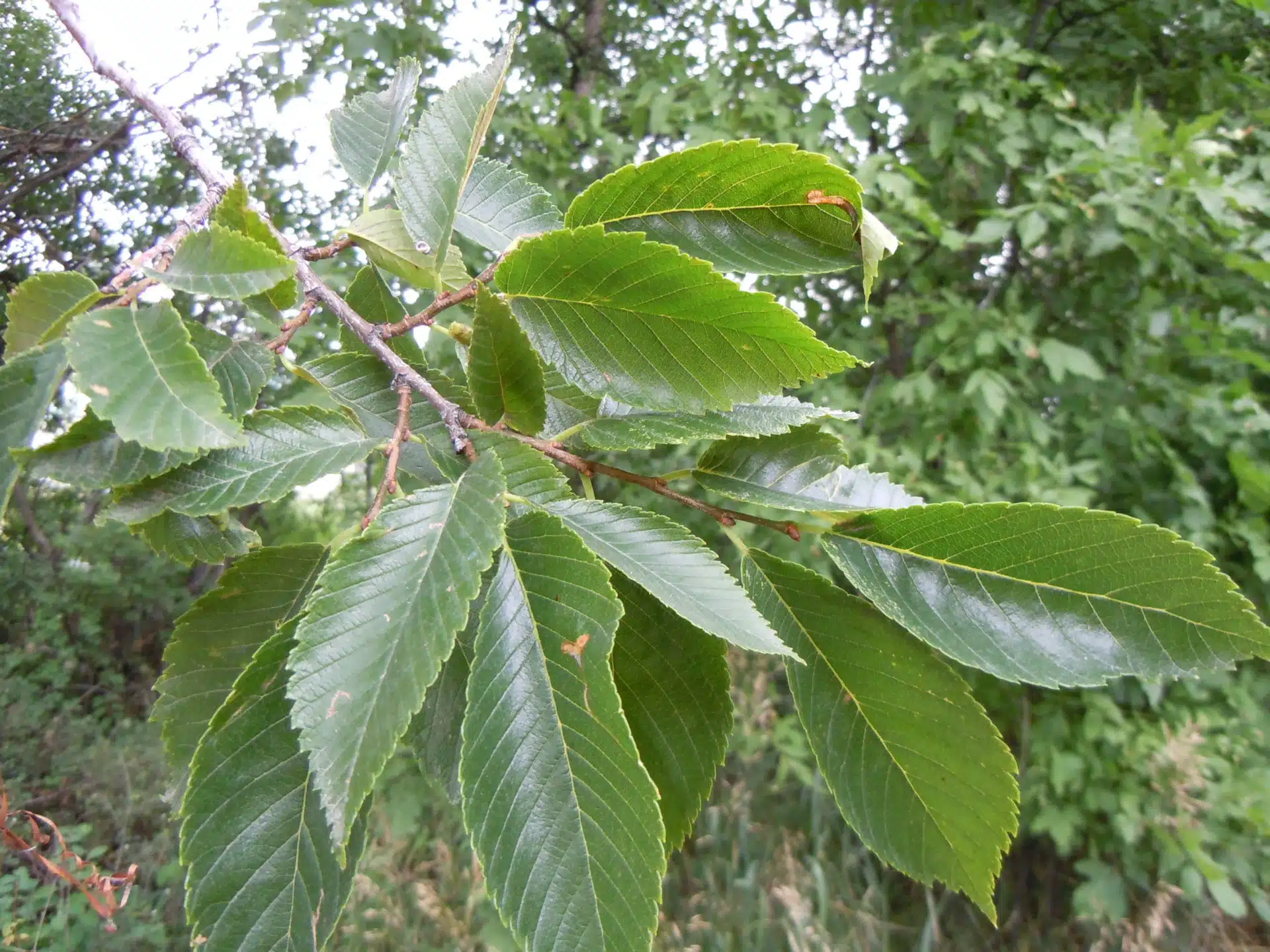Trees
American elm
Ulmus americana

American elm is native from Saskatchewan to Nova Scotia south to Texas and Florida. It was the first tree planted at the Holden Arboretum in 1931.
That tree, a scion of the Washington elm from Cambridge, Mass. did not prove to be resistant to Dutch Elm Disease (DED).Dutch Elm Disease (Ophiostoma ulmi), identified in the Netherlands, originated in eastern Asia. It came to the United States in 1930 with a shipment of elm logs from Europe with burls to be made into veneer in Cleveland. The fungal pathogen is spread by elm bark beetles that were originally dispersed along the rail route between New York City and Cleveland. By the 1960s DED in the United States mutated into a more virulent strain that is lethal to nearly every American elm.
About one in 100,000 American elms display resistance to Dutch Elm Disease. The Arboretum has a number of native elms as well as a few Dutch Elm Disease resistant cultivars. The surviving native elms have avoided being infested by bark beetles, and a number of them die each year after the beetles find them. DED resistant clones are not immune, so the fact that we have planted Ulmus americana ‘Valley Forge’, ‘New Harmony’, ‘Princeton’, and may plant other cultivars, does not necessarily mean that you should do the same. These trees can survive infection especially if they are closely monitored and properly pruned, but may be disfigured as a result. Qualified professional arborists can protect existing elms with fungicide injections performed every three years.
Ulmus americana ‘Valley Forge’ and ‘New Harmony’ have been planted at the Arboretum near the Corning Visitor Center entry drive, picnic area, Display Garden, and by the Administration Building parking lot.
Also on display at the Arboretum is ‘Princeton’ in the R. Henry Norweb, Jr. Tree Alleé. All of these sites either have compacted heavy soil and/ or are subjected to road salt. The ‘Princeton’ elms were structurally
pruned in 2016 to reduce weak branch angles. Pruning at planting and every two to three years for about 10 years after planting is recommended especially for elms planted along avenues or streets. So far, the only purportedly DED resistant cultivar that contracted the disease and had to be removed from the arboretum was ‘American Liberty’, planted in 1984 and removed in 1995. One of these still exists by the Cooper Administration Building parking lot, and one is suffering from bacterial wetwood, a.k.a. slime flux in the Specimen Tree Collection.
Another potentially fatal vascular disease is Elm Yellows (Phytoplasma ulmi). It is much less common than DED and is spread primarily by leafhopper insects. I have measured 30 trees of the above-mentioned cultivars of American elm. They averaged growth of just over 2 feet in height per year with a trunk diameter (DBH) increase of 0.566 inches a year. Of the 30 trees, three failed due to major structural damage due to v-crotches splitting in summer windstorms. Pruning can remediate this problem. In addition, two ‘Princeton’ elms planted in Strong Acres in 1956 have died wi thin the past few years, cause unknown (this area has not been maintained as a plant collection since 2007). American elm is prized for its adaptability, ease of transplanting, fast growth, and its vase-shaped habit. It is a favorite nesting tree of the Baltimore oriole. The foliage serves as larval food for mourning cloak, eastern comma and question mark butterflies. Being a bottomland tree, it thrives in spite of alternating periods of flood and drought. Superior vigor enables it to withstand incursions by butterfly larvae and the like. This is not a tree for small places or for planting by sidewalks or foundations as its large buttressed root system can cause serious damage to masonry.
Its inconspicuous flowers usually appear in March and early April,although our trees started to bloom on Feb. 24 this year given the record warmth. The oval flat winged fruit tends to ripen and flutter away in May and early June. The lustrous, deep green foliage appears in May, and in October it may turn a golden yellow before the nutrient rich leaves fall.
Form: Vase
Growth Rate: Moderate
Light: Full Sun
Site Selection: Open Spaces (Parks/ Lawns), Treelawn or Meridian, Wetlands
Size: Large
Tolerances: Air Pollution, Clay Soils, Compacted Soil, Drought, Salt, Wet/ Saturated Soils




